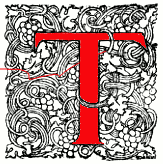 "What is it you want to buy?" the Sheep said at last, looking up for a moment from her knitting.
"What is it you want to buy?" the Sheep said at last, looking up for a moment from her knitting.
"I don't quite know yet, " Alice said very gently. "I should like to look all around me first, if I might."
"You may look in front of you, and on both sides, if you like," said the Sheep; "but you can't look all around you — unless you've got eyes at the back of your head."
But these, as it happened, Alice had not got: so she contented herself with turning around, looking at the shelves as she came to them.
The shop seemed to be full of all manner of curious things--but the oddest part of it all was that, whenever she looked hard at any shelf, to make out exactly what it had on it, that particular shelf was always quite empty, though the other round it were crowded as full as they could hold.
Things flow about so here!" she said at last in a plaintive tone, after she had spent a minute or so in vainly pursuing a large, bright thing that looked sometimes like a doll and sometimes like a work-box, and was always on the shelf next above the one she was looking at. "And this one is the most provoking of all--but I'll tell you what--" she added, as a sudden thought struck her. "I'll follow it up to the very top shelf of all. It'll puzzle it to go through the ceiling!"
But even this plan failed (Through the Looking Glass, pp. 154-5).

his passage demonstrates the essence of fantasy literature as it so frequently appears in both Alice in Wonderland and Through the Looking Glass by Lewis Carroll. According to "Fantasy and Conceptions of the Real" (Landow), fantasies can be distinguished from other styles of narrative by the "problem of knowing." Fantastic literature continuously challenges the reader's (and the protagonist's) sense of "the ground rules" or what can be assumed. This insecurity of knowing characteristic of fantasy should penetrate all aspects of a story, including setting, characters, and plot. In the above passage, within two pages of text, Alice is faced with several problems of knowing. At first, the common phrase "I should like to look all around me first," fails to convey the meaning that Alice intended. She assumes that the Sheep who is waiting on her will understand her comment to mean that she'd like to browse (as the reader has surely done), when, in fact, the Sheep takes her words literally. Furthermore, the Sheep stretches the meaning of Alice's comment to imply that Alice wants to stand perfectly still and see, simultaneously, everything that surrounds her. Not only is this an interpretation of speech that Alice is unprepared for, but it also challenges the convention of speech that the reader is accustomed to.
Alice's physical surroundings are also very precarious in this scene. The Sheep, the counter and the floor of the shop are all as they should be--conforming to the "ground rules" of gravity and solid objects--however, the shelved items float about in an unexpected and hitherto unencountered manner. Despite the irrationality of the situation, Alice quickly adjusts to the new rules of her environment and develops a plan to trap the item she admires by forcing it to the ceiling (where, as she understands things, it should not be able to escape). However, Alice's rationale is virtually useless in this shop and, as she finds out, the objects have no trouble whatsoever in passing right through the ceiling.
Even in the smaller details of Alice's encounter in the store, assumptions are challenged and old rules must be abandoned. As Alice tries to investigate the contents of the shelves, she looks at them more closely (assuming that a closer look will reveal more detail) and finds that the harder she looks, the less she sees. In addition, the specific object that Alice tries to catch isn't really a specific object, but an ever-changing combination of two very unrelated items: a doll and a work-box. After this scene, it seems amazing that Alice can function in a world where it is impossible to know anything for certain, and where it is challenging to carry out the most common of tasks.
Despite ever-changing environment and logic, Alice continues to deal with the challenges that beset her. No prior experience in Wonderland can teach her about what to expect in her next adventure, nevertheless, she manages to get through each bizarre encounter, ready to face new situations that will challenge and re-challenge her assumptions and ability to "know."
Last modified December 1993